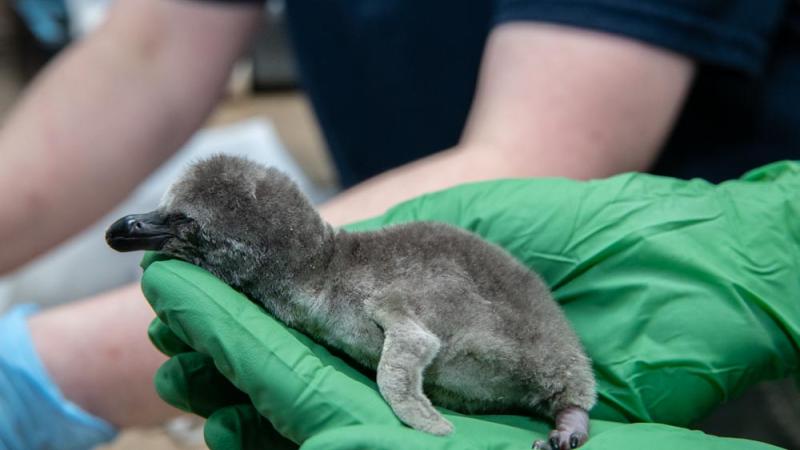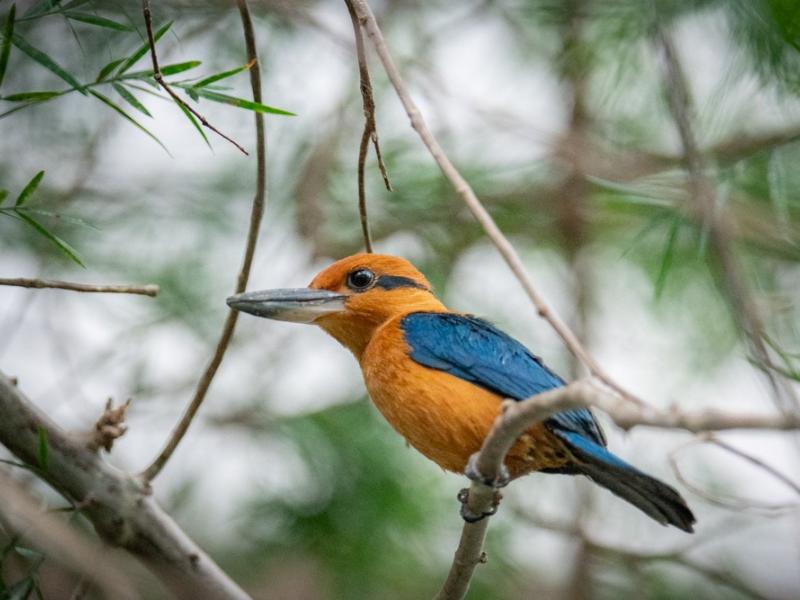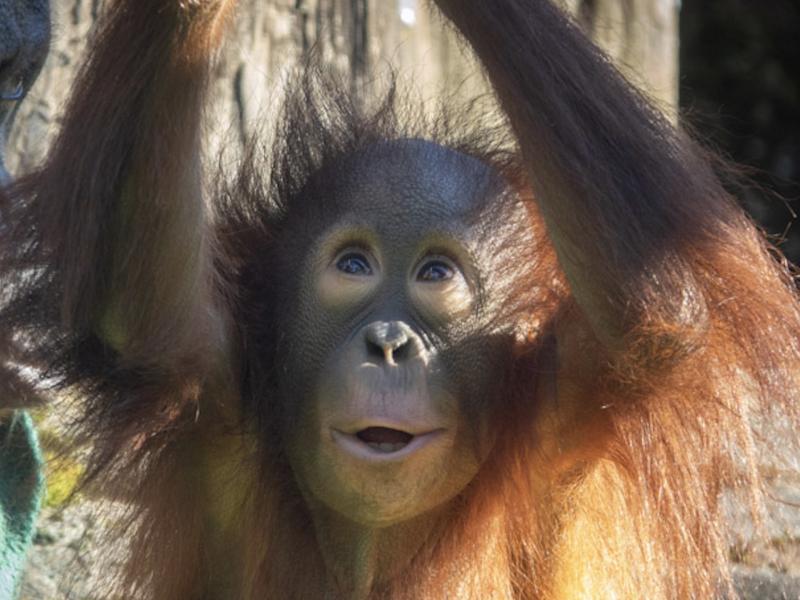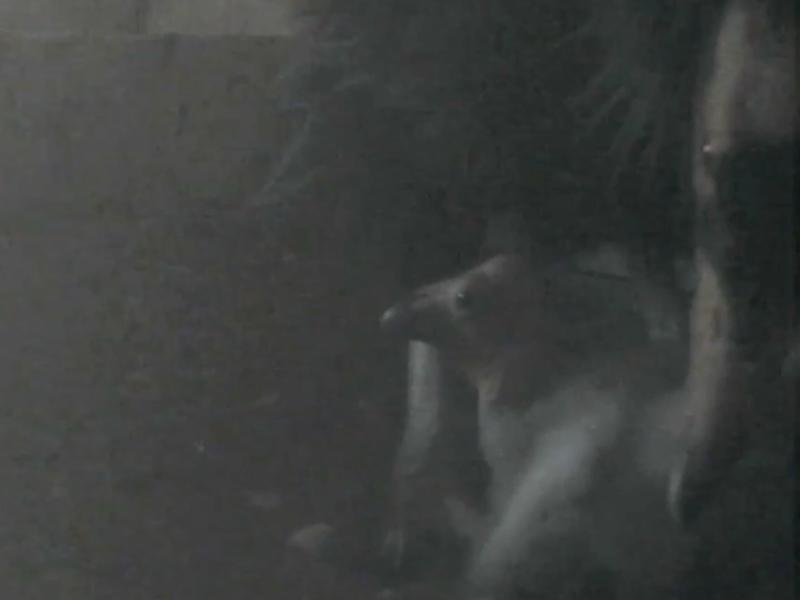With pips and peeps, fluffy penguin hatches at zoo

Fuzzy gray hatchling joins the Humboldt colony at the Oregon Zoo Penguinarium
After a couple of peep-filled days spent emerging from its shell, a new chick has joined the Oregon Zoo’s Humboldt penguin colony.
“The hatching was right on time,” said Travis Koons, who oversees the zoo’s bird population. “The chick seems to be healthy and active, and foster parents Blue and Esquela are taking great care of her. They’re our top penguin parents, and we placed the chick with them so she’d have the best chance of success.”
The egg was produced by a different penguin pair, Mojito and Bonita, who are genetically important for the Humboldt population but less skilled at raising chicks, Koons said.
The young penguin began “pipping” (tapping her beak against the inside of the shell) on March 26, and emerged on March 29. Humboldt penguins typically hatch 40 days after eggs are laid, and it takes around three days for them to fully emerge from the shell, according to Koons.
The fluffy, pint-sized new arrival — which is small enough to fit in the palm of your hand — is the first Humboldt chick to hatch at the Oregon Zoo since 2020, and the 192nd since the zoo began breeding the threatened species in the 1980s.
She will be nearly as tall as her parents by the summer, but easy to tell apart by her plumage: Young Humboldts are grayish-brown all over and don’t develop their distinctive black-and-white tuxedo markings for a couple years.
Once she’s waddling and swimming on her own, the chick will begin to explore the rugged terrain of the zoo’s Penguinarium, which simulates the endangered birds’ native habitat along the rocky coast of Chile and Peru. Until then, Koons says, the young bird will be keeping cozy inside her nest box, growing strong on a diet of regurgitated “fish smoothie” provided by her devoted parents.
Once they fledge, at around 3 months old, young penguins can swim right away — no lessons needed. Guests can look for the chick among the other sleek seabirds as they dart through the clear waters of the zoo’s Penguinarium. In 2012, the zoo completed an upgrade of the Penguinarium’s water-filtration system, one of many improvements funded by the community-supported 2008 zoo bond measure aimed at protecting animal health and safety while conserving and recycling water. The upgrade saves millions of gallons each year.
Humboldt penguins, which live along the South American coastline off of Peru and Chile, are classified as “vulnerable” by the International Union for Conservation of Nature, and in 2010 were granted protection under the U.S. Endangered Species Act. Of the world’s 17 penguin species, Humboldts are among the most at risk, threatened by overfishing of their prey species, entanglement in fishing nets, and breeding disruption due to commercial removal of the guano deposits where the penguins lay their eggs. Their population is estimated at 32,000 adult birds and declining.
More News

Zoo welcomes ultra-rare sihek kingfishers
The Oregon Zoo is home to many critically endangered species, but perhaps none as rare as its newest arrivals: a trio of sihek kingfishers.April 25, 2024

Jolene turns 2: Zoo to celebrate orangutan's 2nd birthday
The littlest member of the orangutan family is celebrating a big milestone this week: Jolene will turn 2 on Saturday.April 12, 2024

Seven chicks and counting: Zoo welcomes first condors of 2024
Seven fluffy chicks hatched last month at the Oregon Zoo’s Jonsson Center for Wildlife Conservation.April 5, 2024

